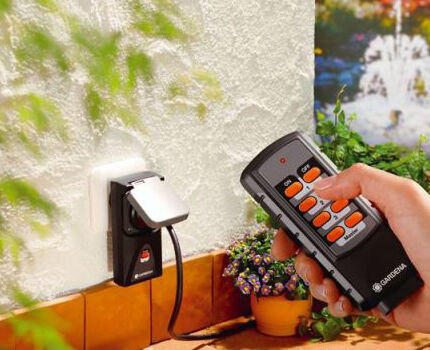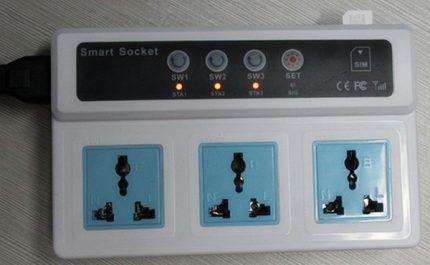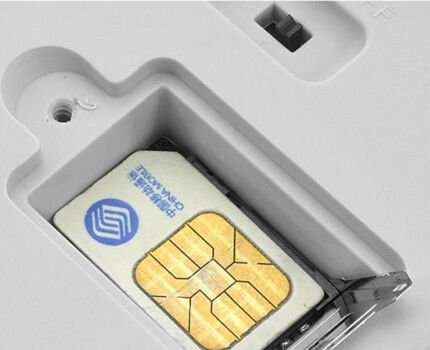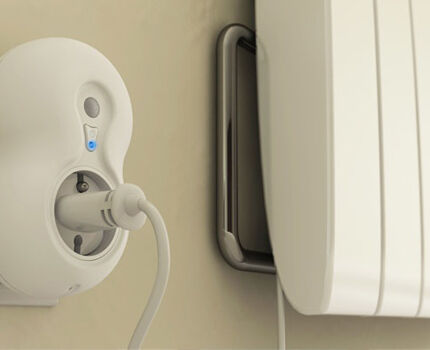Smart socket with remote control: types, device, how to choose a good one
Sockets that can understand their owner from a distance have been introduced by manufacturers for many years.Their main disadvantage is their fairly high cost. If you buy one smart socket, it will not cost much. But with one outlet you won’t be able to fulfill all your needs for creating the most comfortable conditions, right?
To remotely control the maximum number of devices, you will have to spend money on purchasing more sockets. In view of their considerable cost, I would not want to waste money by buying an unsuitable or even bad product. To prevent this from happening to you, we reviewed the device and main types of smart sockets in this article.
They also provided useful recommendations for choosing truly high-quality smart products, supplementing the text material with visual photos and educational videos on the selection and operation of smart sockets.
The content of the article:
Functional purpose of smart sockets
Initially, devices that can be controlled remotely were developed for private households. After all, the local area, flower beds and other plantings need daily attention and care.
So, you need to water the plants at certain times of the day and turn on additional lighting in the greenhouse. It is not always possible to arrive home on time to do all these household chores.
And what does it cost to open the gate on a chilly autumn evening, when gusts of wind and annoying streams of rain prevent you from calmly opening the car door.
Here it is appropriate to use modern achievements of the scientific and technological world to create additional comfort in your life by organizing remote lighting control and the operation of individual devices.
Apartment owners who live in high-rise buildings and rush to work every day also experience a lot of minor inconveniences.Having woken up from the insistent trill of the alarm clock, you don’t want to get up and go turn on the kettle.
A smart socket will help correct this absurdity - it will gladly take on this function.
Now you can, without getting out from under the blanket, send a command to turn on the kettle or coffee machine to the kitchen, using the capabilities of a smart device. While your morning coffee is being prepared, you can blissfully spend these few minutes in a cozy bed.

In addition to comfort, it is convenient to use smart devices to save time and money. For example, program the boiler to turn on 1-1.5 hours before coming home from work or the morning alarm ringing.
In the absence of the owner, there is also no point in maintaining a comfortable air temperature in the apartment - it is enough to do this 40-60 minutes before your return.

Types demanded by consumers
The variety of models offered by manufacturers causes confusion for the client who encounters them for the first time. They are all different, but depending on the type of installation they can be divided into 2 main types: overhead and internally mounted walls.
Overheads are essentially adapter sockets. They are in great demand among consumers because they do not require special skills to use.
All you have to do is buy the model you like, unpack the box, plug it into a regular outlet, configure the necessary parameters to control it, and connect the desired device.
You won't have to do anything else. If you need to use this outlet in another room, then simply move it geographically.

Models installed in the wall instead of a conventional outlet are used, as a rule, for complete repairs. To do this, first carefully consider where and for what purposes they will be used. It is also important to correctly select the required power of the device.
Based on the type of control, sockets that execute commands at a distance can be divided into 3 main types:
- radio controlled;
- SMS-controlled;
- Internet-controlled (wi-fi or mobile internet).
A representative of radio-controlled models is a socket with a remote control. It responds to commands coming from a distance of up to 30 meters.
SMS control allows you to turn on the air conditioner while in line at the supermarket checkout by sending a message. Coming home with shopping, you can relax and enjoy the pleasant coolness of the room after the stuffy street smog.
Models that receive commands via Internet communication can be conveniently controlled from anywhere on the planet. Even while staying at a hotel in Goa, you can monitor the humidity level in your favorite greenhouse.

Depending on the design features, there are the following types of smart sockets:
- single independent model, controlled remotely;
- one socket containing several independent control outputs.Each of these outputs can receive separate commands to turn on/off the device connected through it;
- a group of sockets, where one is the main one and the rest are dependent. The main unit is capable of controlling the operation of a group of outlets subordinate to it;
- extension socket or GSM surge protector. This type of controlled devices accepts commands both for all outputs at once, and for each one separately.
As for use, independent models are in greatest demand - many potential clients are just looking at the possibility of having such a smart device in their home.
Having become accustomed to the benefits of smart plugs, consumers often cannot imagine their lives without them. Therefore, after a few months, they buy a group of dependent sockets.

You may also be interested in information about sockets with timer, discussed in our other article.
Option #1 - radio controlled sockets
One of the types of wireless smart sockets is radio-controlled. It consists of the socket itself/set of sockets and the remote control for them.
As a rule, the package includes a user manual with a detailed description of the operational features of the device; it may also include a battery for the remote control.
Connection and further use do not require special skills. This smart device is a kind of adapter that is inserted into a regular outlet, and then a kettle, computer or other device is plugged into it.
On the outer part of the case there is an indicator button showing that the socket responds to remote control commands.Also, there is a button for physical action if the remote control suddenly gets lost. These devices usually operate on the radio frequency 433-315 MHz.
Manufacturers indicate detailed information about the technical characteristics of a particular model on the back of the socket itself and duplicate it in the instructions.

Such smart devices are mostly produced by the Chinese. But despite this, they are made of high-quality plastic that can withstand a long service life.
Depending on the chosen model, they are able to respond to remote control commands coming through the wall. The range of this type of perception is 30-40 m.
When choosing a model for the street, you need to take into account external influences - wind, dew, etc. Here it is appropriate to purchase models with a degree of protection against moisture ip44. For a smart socket equipped with a remote control, walls are not an obstacle.

Even while in front of the TV, you can turn on the irrigation of the flower beds without interrupting the viewing of your favorite movie. There are devices that perceive commands from a distance of about 100 m, provided there are no obstacles in the way.
Option #2 - smart GSM sockets
This type of socket is controlled using a mobile phone. Initially, for them to perform their functions, you need a phone with a working SIM card, a socket, and another SIM card with the SMS messaging function enabled.
On the back of the device there is a slot for a SIM card.On one side of the device there is a plug, and on the other there is a socket for connecting various electrical appliances. There are also indicators that display the reception of a signal, the presence of power, and the supply of electricity to the connected device.

SMS commands can be controlled from different distances. It is important that the house/apartment where this model is turned on has a stable cellular operator network. There are models that manage to send a message to the owner if there is a power outage.
GSM sockets can also be controlled through a special application that you need to download and install on your tablet/smartphone.
This type of smart plug is distinguished by the additional features and functions that they can perform. Additional sensors and indicators installed in the device are sold for them. For example, a door opening sensor, temperature and humidity indicator.
Also, many models have the ability to set a schedule for turning on and off certain devices depending on the time of day or day of the week, a customizable timer, an external microphone and other features that allow you to make your life more comfortable.
There are models equipped with a battery designed for 12 hours of uninterrupted operation in case of an unexpected power outage. Some models can only send an emergency message to the owner of the home about what happened.
Smart sockets are used in schemes for providing homes with security systems:
Depending on the fame and reputation of the manufacturer, the internal condition of the device may or may not be done carefully. If you unscrew the socket, you can see a printed circuit board with an electronic circuit and notice how concerned the manufacturer is with the quality of all components.
It happens that the wires are soldered carelessly, the flux is not washed off the board, there is no special coating that can protect the internal components, solder joints and conductors from environmental influences - steam, moisture, grease and salts.
Among the disadvantages of GSM sockets are their relatively high cost, bulkiness, and dependence on mobile and Internet communications.
Option #3 - remotely controlled Wi-Fi modules
Sockets that receive commands via the Internet are also in high demand in the smart device market.
Thanks to the presence of additional functions, they can have a built-in video camera, motion, humidity and temperature indicators, various customizable timers and other additional features.
Also, prudent manufacturers offer models where several types of control can be used - for example, SMS and Internet. No network - sent a message to the outlet, it began executing the command.

The smart socket consists of a button to turn it on and off, an LED indicator, must be grounded, and some models are equipped with spare batteries so that in the event of a power outage, they have time to execute the command and notify the owner.
The operating principle of such an outlet is based on the use of a Wi-Fi network – 802.11 b/g/n, with a frequency of 2.4 Hz. It connects to the router and gets its IP address. For wireless control, you can use any gadget - laptop, tablet, PC, smartphone.
To do this, you need to download a special application and set acceptable settings. Everything is clear and accessible, just use your intuition.
The manufacturer indicates the main technical characteristics of these sockets on their reverse side and in the instructions. Their input voltage is 100-240 V, and their output voltage is up to 5 kW. These parameters are individual and depend on the specific model.
Also, up to 50 dependent devices can be connected to one control socket, combining them into a network. Installing such a number of smart devices will allow you to fully automate the management of all equipment in the office.
You may also be interested in information about other smart appliances - smart lamps, smart switches.

The use of Wi-Fi-controlled sockets helps not only to solve many issues without personal participation, but also to provide additional comfort. It all depends on the additional capabilities and built-in functions of the device, as well as on the settings made by the owner of the home.
For example, if a noise level sensor is installed in a children's room, you can use the built-in video camera to see what is happening there at a given time. Perhaps the nanny is treating the child poorly, but by the time the owner goes up to the nursery, she will not have time to see anything incriminating.
Option #4 - sockets of our own production
It’s possible to assemble a remote-controlled smart socket with your own hands. But for this you need to have certain skills, tools and spend a certain amount of money on components. Also, you cannot do without knowledge of electrical engineering and programming.

For a simple version of a homemade smart socket capable of executing commands, you will need the following components: an external socket, a Wi-Fi module, a power supply with a 3.3 V voltage regulator, a solid-state relay, and a soldering iron with consumables.
For a beginner who is faced with such a task for the first time, it is easier and cheaper to buy a ready-made smart device. After all, if you make a minor mistake, you can not only ruin the parts for the future device, but also cause harm to yourself.
But if you have knowledge of electronics and experience in assembling various devices, you can independently assemble not only the socket, but also the system smart home, automating heating system, lighting and other systems. Why do many home craftsmen take as a basis Arduino controllers.
A smart devices, produced by various manufacturers of household appliances, will actively help you in this matter.
Subtleties of choosing a good smart socket
Companies producing smart home appliances are offering increasingly competitive models. The appearance, capabilities and technical characteristics of all manufacturers differ. Therefore, when choosing the best option for your home, you should focus on your needs.
Firstly, you have to decide for what purposes and in what rooms the smart sockets will be used. This is the most important question, because if you just need to turn the electric kettle on/off, then there is no point in buying an expensive model with many additional functions and capabilities.
You may need more than one device, but several at once - the main and dependent ones.

Secondly, it is important to select a power that matches the power of the electrical appliance that will be controlled using this outlet.
Under no circumstances should you rely on the fact that a socket with a lower output power can cope with a boiler or heating boiler. It is advisable not to buy smart devices with an output power of less than 2 kW at all.
Thirdly, you need to decide what additional features your model should have and choose a device that meets these requirements. After all, not all sockets have special connectors for connecting certain devices or sensors.

Fourthly, it is highly desirable that the device have an additional battery.
Fifthly, it is better to choose models that provide several channels for control.
As for the cost, you need to understand that there are no good models with a wide range of functions at a low price. Therefore, the more a smart device can do, the more expensive it will cost.
Cheaper options are quite usable; they are made of high quality plastic and are quite capable of performing all the functions provided by the manufacturer.

The most popular smart plugs are from manufacturers such as TP-Link, Orvibo, SenseIT, Redmond, Xiaomi and Broadlink.
Conclusions and useful video on the topic
Video review of the most popular GSM sockets:
The video will introduce you in a visual form to sockets with remote control:
A video presentation will help you better understand the specifics of smart plugs:
Detailed review for potential buyers of WI-FI sockets from Orvibo:
The use of smart sockets to improve the comfort of your home or apartment has been proven by clear examples of more than one satisfied user. The high cost of smart devices is fully justified - after all, they are capable of performing a lot of additional useful functions..
By installing remote-controlled sockets, you can control the situation in the house, even while on a long business trip. To do this, you don’t have to ask a friend to water the flowers and check if the tap is leaking or if the electrical wiring is in order. Just go to the application installed on your smartphone and see everything in real time.
Have you decided to test the capabilities of a smart socket by purchasing one model “to try”? Or do you have questions about choice that we did not cover in this article? Ask your questions in the block below - we will try to help you.
Or maybe you already use a set of remote-controlled smart sockets? Please share your experience with our readers.





We have two wi-fi sockets, we bought them for testing. One turns on the coffee maker, and the second is used either for the iron, and then you can check that it is definitely turned off, or for the heater, then you can turn it on a couple of hours before arrival. I can’t say that this is a necessary thing, just one of the ways to feel yourself in the future. The real benefit will come when the entire home network is connected like this, not before.
For now, some people probably think that such an outlet is a luxury item. Or it is purchased by those who are “fucking crazy.” But I think they will soon appreciate such a miracle of technology. It is very convenient to control electricity, especially if there are children in the house. Remote control is a good thing if you have a large house or are also taking care of a small child. So it’s better to turn on, say, a washing machine. And for people with disabilities, this is not a means of luxury, but simply a way to live comfortably.
This outlet upset me a little. The thing is not cheap, I really hoped that it would properly turn on warm floors in the country. I was very disappointed that she refused to respond to SMS even at -8ºС.
It's a pity, Igor, they didn't name the model. I have experience in operating the SimPal-W230 socket - it monitors country electric convectors with a total power of 3 kilowatts. Turns on the heating via SMS, then maintains a 23-degree temperature. The lower temperature limit according to the passport is “-25º”. The passport states: tested at “-40º”. Among the many sensors, the most attractive is “smoke”. Before purchasing equipment, carefully read the passports.